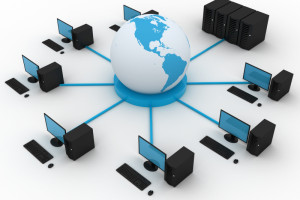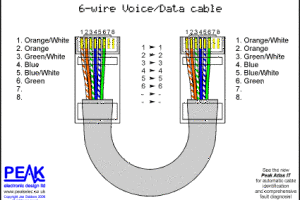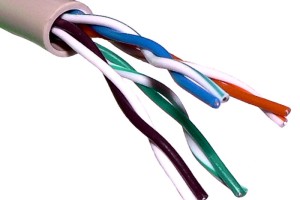Universal Network Cable
As the world of technology evolves, people are connecting in many different ways. While twenty years ago some businesses were still run on paper, (without computers), today most businesses require computer and internet access to thrive. Particularly as businesses expand, the speed of communication is becoming crucial to success.
One of the most popular applications of computer technology, especially in corporate settings, is computer networking. These internal networks allow companies to maintain consistent communication from within, usually carrying email servers through which most business is done. One of the first means of networking is a T1 system, which works like an internal phone system. Developed by Bell Labs in the 1960s, T1 networks ran along telephone lines and were dialed into, much like the early means of connecting to the World Wide Web. These days this system has been digitized and ‘T1’ generally refers to any system that runs at a 1.544 Mnit/s line rate.
In the 1980s, Ethernet networking began to be widely utilized in the world of business. Originally, Local Area Networks or LANs were a small web connected within a single building or office. Ethernet replaced area networks with ethernet data cables over which visual information is broken into frames, and travels more quickly and clearly. Because there are so many different ways for companies to internally network, frequently when branches integrate or two businesses need to work closely cross-network, there are issues with compatibility. In such cases, the employed technology professionals have to build a series of patches between hosts. This process generally requires both a good deal of skill and time. The IT professional must identify the exact networks, their cabling, and build a physical hard patch between the two using the appropriate dongle or converter.
A new invention on the tech scene has eliminated the messy process of patching these networks together. The Universal Network Cable practically allows for the adaptation on any network cable to any other. Without having to build a patch from scratch or search for the correct converter among many, the Universal Network Cable quickly creates communication between two or more varying systems. Its five connections include:
- Rolled: connects a host to a router.
- T1: connect to DDS lines/ T1 lines.
- Straight-through: a standard RJ45 patch.
- Crossover: connects 2 or more computers without a hub.
- ATM/Loopback: test is a network card is working without a hub.
Some reviewers note that if the space and operation are smaller, the efficiency of the tool may be overkill for the task. However, at a market cost of $25, the Universal Network Cable is a reasonable cost for the benefit of speeding business relations and upping communication performance. While most techies admit that for personal network set ups such as those in a household setting, or for individual online gaming this tool may be unnecessary, this cable was designed mostly for corporate use, and is so useful that is leaves most IT personnel asking, “Where has this gadget been?”




